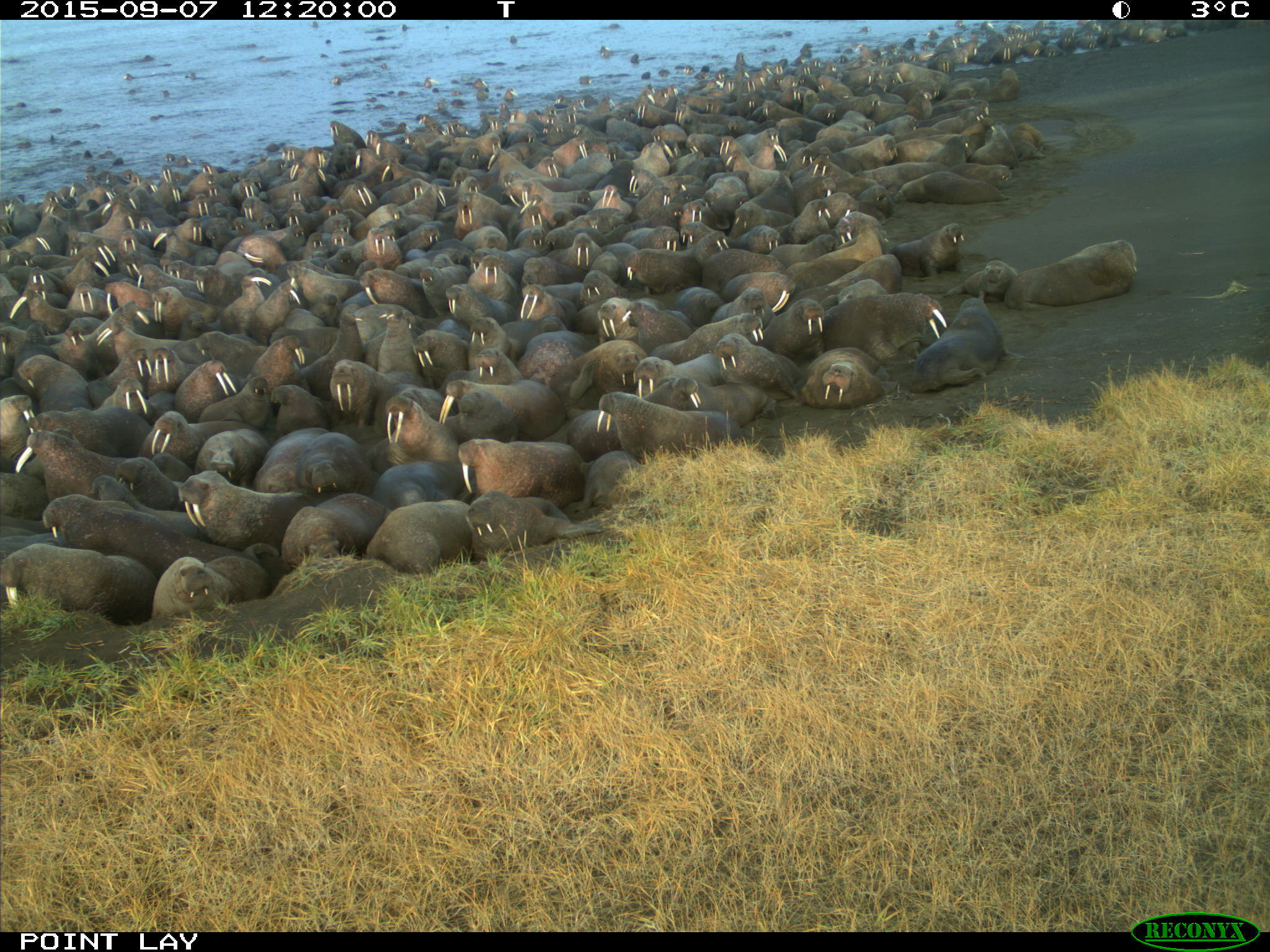Walrus have once again begun massing at an Arctic Alaska beach
In an era of low sea ice, the once-unusual gatherings are becoming regular events.

As they have for almost every year since sea ice extent plunged in 2007, Pacific walruses are amassing at a beach on Alaska’s Chukchi Sea, officials report.
By late August, thousands of walruses had amassed on a barrier island near the Inupiat village of Point Lay, the same spot where the animals have been crowding in late summer or early fall almost every year in the current low-ice era, the U.S. Fish and Wildlife Service said.
This year’s haulouts were first reported around Aug. 22, said Andrea Medeiros, a spokeswoman for the Fish and Wildlife Service. Experts from the National Oceanic and Atmospheric Administration who were conducting an aerial survey reported on Aug. 30 that they had seen about 25,000 walruses at the beach site, Medeiros said.
The walrus haulout site is a barrier island near the village. As many as 40,000 walruses — adult females and their young calves — have crowded there in past years. The beach is far from the animals’ preferred feeding areas, forcing them to make long swims to gather food. And the crowding is dangerous because young walruses can be trampled to death in stampedes.
The U.S. Coast Guard has issued a notice to mariners urging caution around the animals. Vessels traveling past the area should “provide an extra wide buffer zone” and stay at least 5 miles from shore, and barges and other vessels servicing the village of Point Lay or nearby Cape Lisburne should stay at least a mile away from the walrus gathering, the Coast Guard said in its notice. Precautions are also needed for walruses found in the water swimming to and from the shoreline, the notice said, including maintenance of a buffer of at least half a mile.
“Vessel operators should take every precaution to avoid harassment of walruses when a vessel is operating near these animals,” the notice said.
The walruses are expected to stay in the area for weeks, possibly remaining there until early October, the notice said.
The Fish and Wildlife Service and the tribal government in Point Lay have also asked outsiders to steer clear of the area when walruses are congregated in the fall. Locals are engaged in a campaign to explain the walrus gatherings and their significance; federal officials worked with the local school to create an educational video.
Prior to 2007, walrus gatherings on beaches on the Alaska side of the Chukchi Sea were rare, according to the Fish and Wildlife Service.
Walruses use sea ice to rest, give birth and nurse their young. In the past, they depended on pieces of sea ice to serve as resting platforms in between food-foraging dives down to the seafloor. Walruses eat clams, snails and other small creatures, and one of the richest foraging sites is the Hanna Shoal area in the Chukchi Sea, a place with a large underwater mesa. The shoal has plentiful amounts of food that is within easy reach for walruses, as long as there are nearby ice floes. But in the low-ice era, walruses have headed to shore to find resting spots between dives for food. The Point Lay beach is about 180 miles from the Hanna Shoal, a long swim for walruses trying to get food.
Last year’s Point Lay gathering, which started in the first week of August, was the earliest on record, according to the Fish and Wildlife Service. Sea ice extent in the Chukchi was particularly low last year.
Walruses spend winters in the Bering Sea, and mating season is in late winter. When sea ice starts to thaw, the females and young calves migrate north to the Chukchi Sea, while the adult males move south to the rocky coastlines of Alaska and Russia.
This year, after a record-low sea ice season in the Bering, the adult male walruses congregated on a beach near Port Heiden in southwestern Alaska. It was the first time they had gathered there since 1990.
Yereth Rosen is a 2018 Alicia Patterson Foundation fellow.